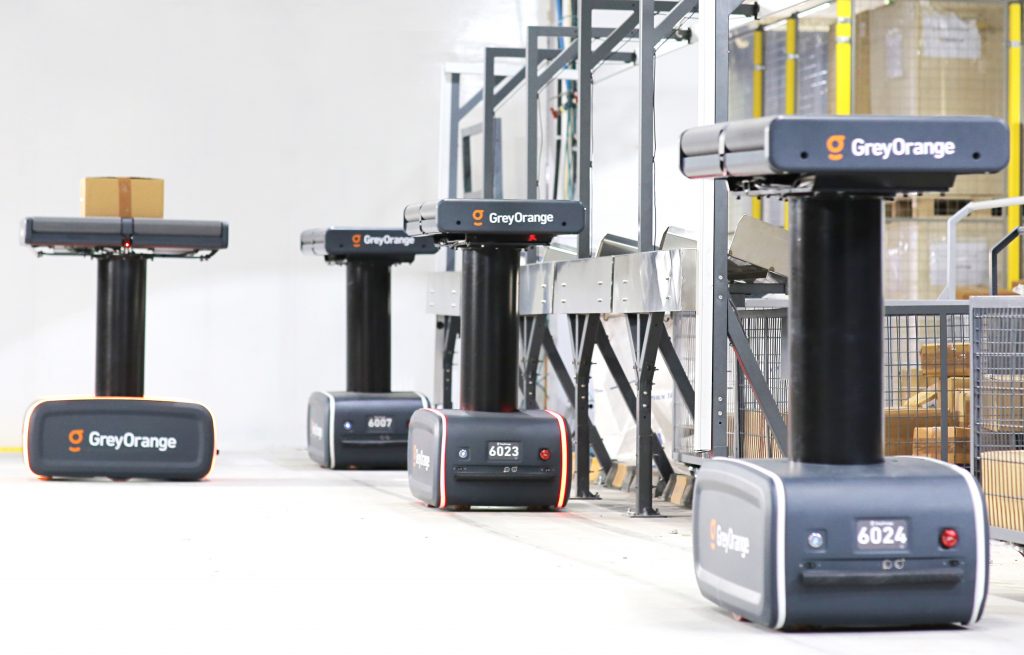


Supply chain issues have ceased to be a subject discussed solely among industry experts, writes James Newman, EMEA Director at GreyOrange. It is now a common concern voiced by businesses and consumers across the world and boasts a regular spot in the news headlines. Following the Covid-19 pandemic, 91% of consumers reported to taking the supply chain into consideration when making a purchase, an increase from just 45% before 2020, according to an Oracle survey.
Labour shortages, the Covid-19 pandemic, and global political unrest have been wreaking havoc on businesses’ ability to fulfil orders. Recent government census results show a twenty-six consecutive monthly increase in unfulfilled orders for manufactured goods.
The recent news that Amazon plans to close three of its UK warehouses, placing 1,200 jobs at risk, signals that even the world’s largest internet retailer is not immune to the problems in fulfilment and supply chains of recent years. Yet Amazon is preparing for the future, the warehouses it plans to shut will be replaced by new ones powered by robotics and automation.
It’s not all doom and gloom. The disruptions and troubles we are facing today allow us to reimagine and construct a stronger, more resilient supply chain of the future. The solution is already here: robotics and automation.
Overcoming labour shortages
It is no secret that there is currently a human labour shortage impacting most industries, and this is also true across every stage of the supply chain – especially in the warehouse. Instawork’s 2022 survey, found that 73% of warehouse operators couldn’t find enough labour. Businesses can try and entice workers with offering higher wages and increased benefits, but they still may be met with a limited response.
An often-overlooked problem for workers in the warehouse sector is that warehouses continue to be a comparatively unsafe place to work. The injury and work-related illness rate for the warehouse industry is 1 in 20 people – very high compared to many other jobs. The risk of injury or illness while working is driving a lot of people away from the sector, contributing to the growing warehouse worker shortage.
With a restricted workforce available, retailers are in danger of not being able to fulfil orders quickly enough, and therefore harming brand reputation with customers. Despite the pandemic induced spike in e-commerce sales, recent ONS findings show online retail sales to have returned to their pre-pandemic growth trajectory. This places online retail sales at 18.2% higher than their pre-pandemic levels. Yet, what the spike in sales during the pandemic has shown us is that supply chains are unprepared and technologically unequipped to manage sudden sharp changes in demand.
Current issues in distribution involving labour shortages, strikes, and delays could all be avoided by investing in robotic warehouse automation. The adoption of AI robotics can help to increase warehouse productivity by as much as 40%, reduce labour costs by as much as much one-third (33%), whilst also reducing order fulfilment time by as much as 50%.
With AI-powered robots in the warehouse, orders can be fulfilled 24/7 with no downtime, plus its flexibility and scalability means businesses can avoid overpaying and over-producing in their warehouses and distribution centres.
Robot-as-a-Service
RaaS is the means of leasing robotic devices and accessing a cloud-based subscription service rather than purchasing the equipment outright. The subscription-based service model puts an end to the worries of paying off an expensive piece of robotic equipment and dealing with any maintenance issues that arise.
Retailers are increasingly incorporating RaaS into their supply chains due to its scalability and flexibility, resulting in lower costs and increased efficiency. Businesses can scale up and down operation cost-effectively to meet peaks and drops in consumer demand, enabling businesses to only pay for what they use.
The lower entry cost of RaaS in comparison to traditional robotics programs grant small- and medium-sized businesses to access the benefits of robotics without the often cost-prohibitive initial investment.
The role that AI and Robotics can play in providing scalability, agility, and a great end-to-end customer experience, is an example of why technology changes need to be accelerated to ensure retailers stay nimble, and adaptable during high demand.
Read more from Logistic Business